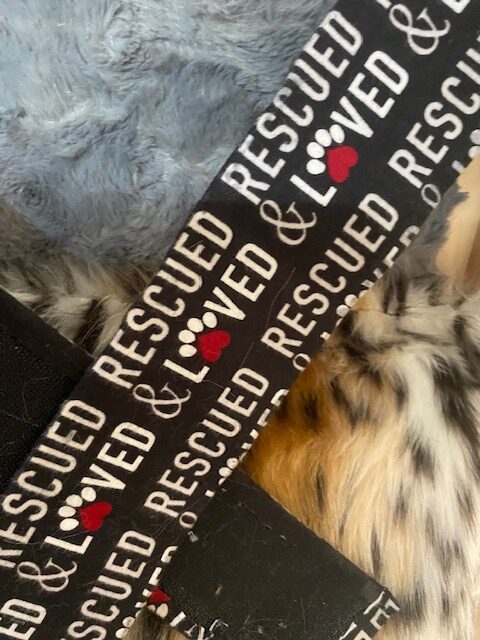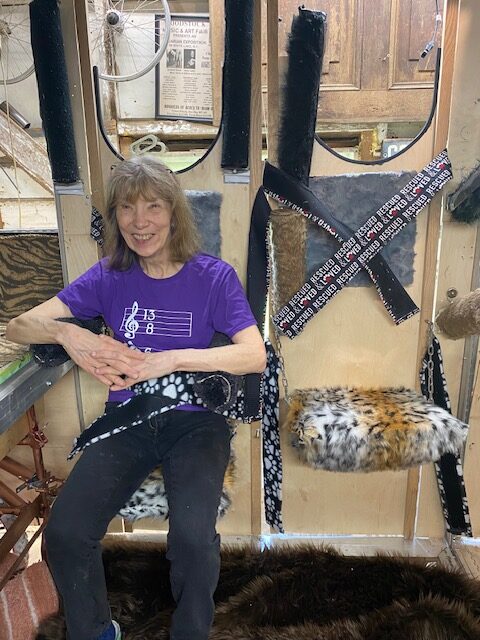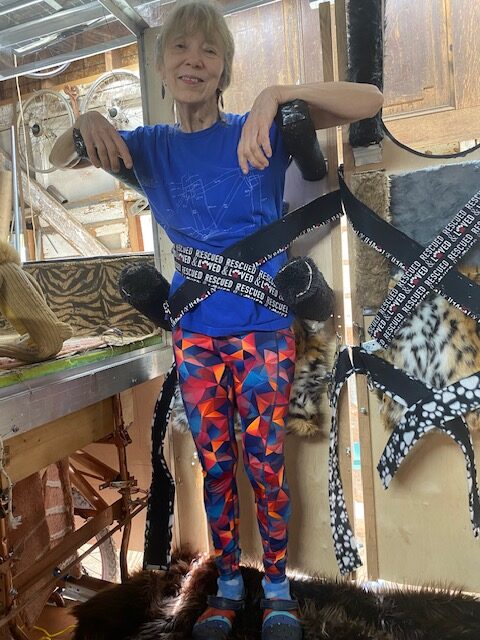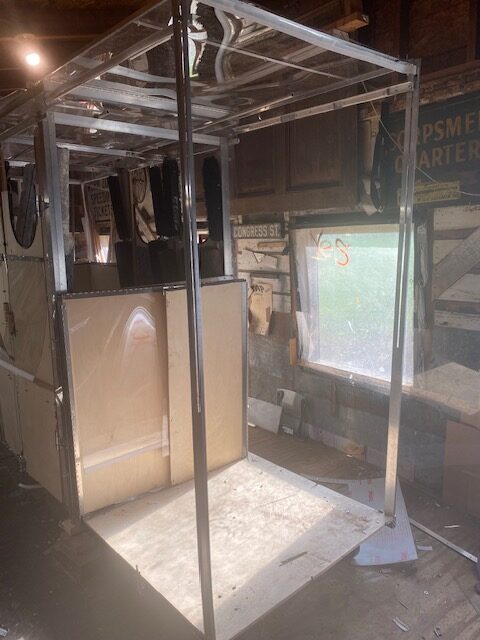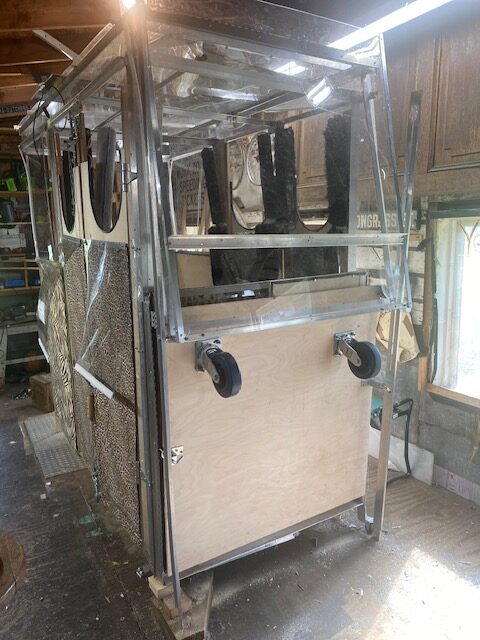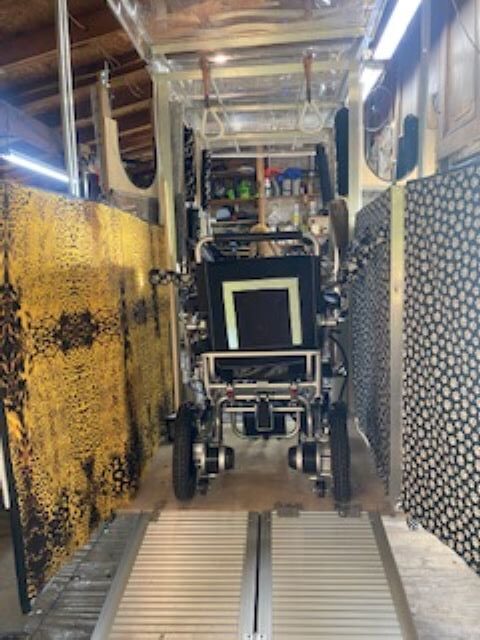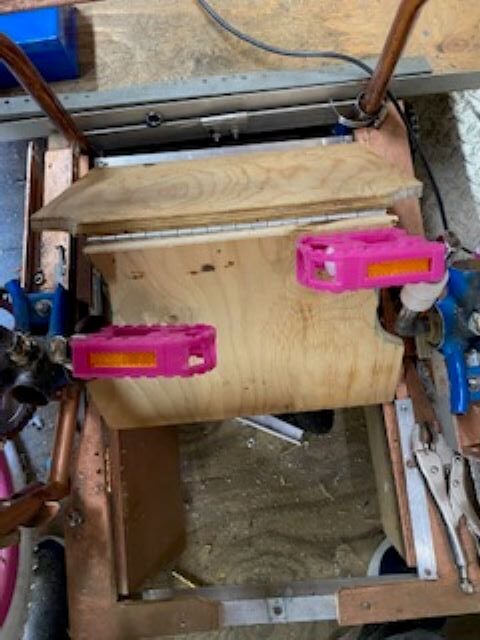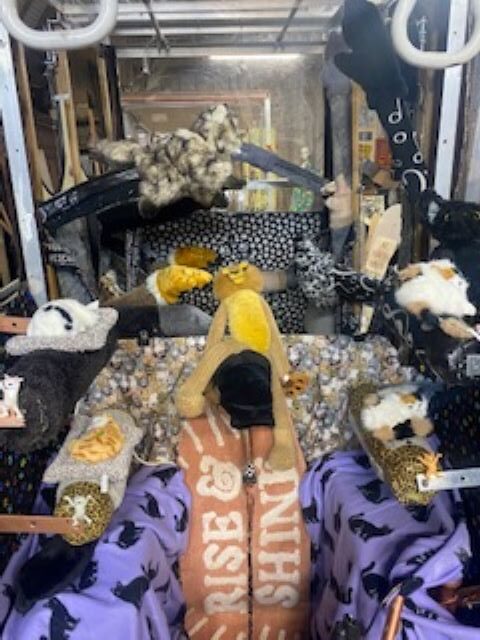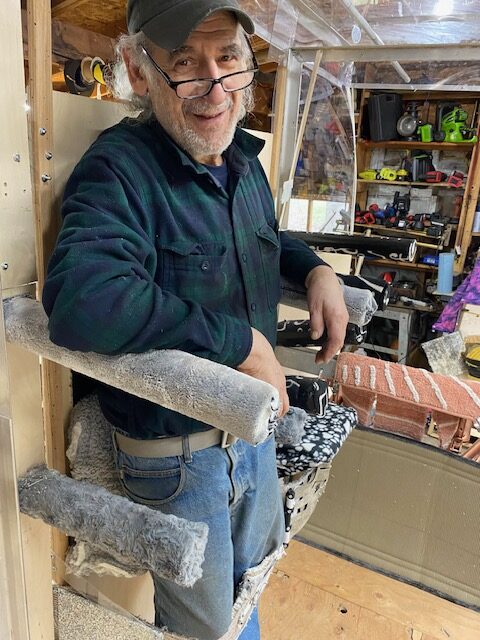The CAT is a prototype developed by A Movement Founder, Steve Stollman, showcasing innovative ways to reconfigure and reimagine pedicabs to maximize their potential. Designed to inspire, The CAT offers a glimpse into how local creators can adapt pedicabs to meet specific community needs. The project encourages a rethinking of human-powered vehicles, highlighting their adaptability, low environmental impact, and potential for positive social impact.
The CAT project exemplifies the kinds of innovative solutions A Movement hopes to see from members around the world, each addressing unique transportation and sustainability challenges in their communities. It is an example of what’s possible through collaboration, creativity, and sustainable design.
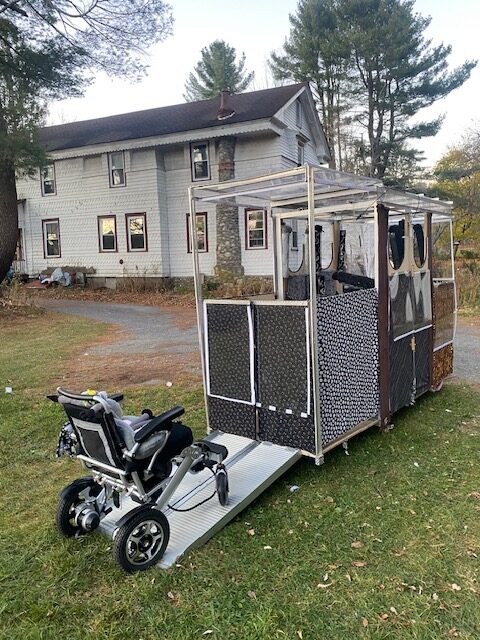
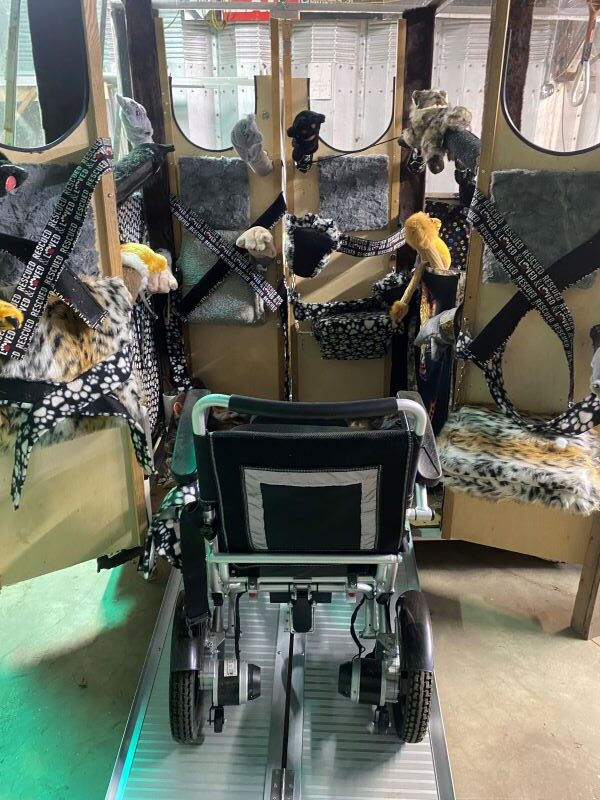
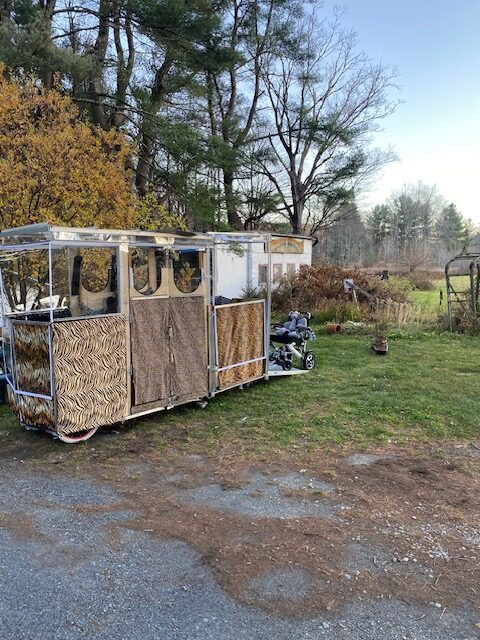
This prototype vehicle
was constructed in order to demonstrate some of the ways in which “Pedicabs” can be re-configured, maybe even re-conceptualized, in order to make full use their potential. They are now operating in many other urban spaces, in countries across the world. In some, they are already being converted to electric operation en masse, by law, in order to help improve the breathable air. Attention to their siblings, cargo and delivery cycles, is expanding exponentially, with next hour/same day/next day service the rule now. It is time to think about this subject seriously, rather than dismissing it as a bit of strange overpriced, nostalgia.
The CAT is:
Only 40” wide, (it might like to be 48” to better accommodate side-loading wheelchairs), The city permits pedicabs to be 55” wide
Seven feet long, with an additional 40” for the foldable extension, which can provide for a second wheelchair or cargo use
Seven feet tall, in order to enable a 6’+ tall person to stand inside comfortably and provide some space for ancillary equipment
Depending on weather, is surrounded by clear polycarbonate windows, that can be folded away when not in use.
In order to maximize capacity, conserve space and provide for different postures, standing/leaning is possible and safe with restraints
It is steered with a tiller, and pedals provide some power, as well as controlling the speed, which maxes out at 15 MPH.
The roof is covered with solar panels, that can produce up to a third of the energy needed to move the vehicle during the day
The underside of the vehicle contains spaces for a number of re-chargeable batteries which can be charged in place or changed out
There will be a variety of services offered, Wi-Fi, device charging, telephone connecting, some now, some later
Operators of vehicles need to be very familiar with their territory and can profit substantially by providing job, space, and other help
Ideally there can be regular routes for vehicles, with ties to all local merchants and cultural and educational resources
Can serve on-call customer rides, wheelchairs, neighborhood and many other tours, cargo and freight, group rides
Wheelchairs can load from either side, the sidewalk, or from the back with a movable ramp to serve all openings
There needs to be room for up to 8 passengers in such a conveyance because sometimes there is that much need to fulfill
It’s called the CAT, because felines are some of the most interesting, engaging, loving, ferocious, and ubiquitous fellow mammals
Also beautiful, puzzling, graceful, proud, individual, soft, as hard to understand as they are to dismiss, not unlike us, planet-mates
Leaping and pouncing, curling up and stretching out, demanding and self-possessed, mysterious and predictable, like us.
